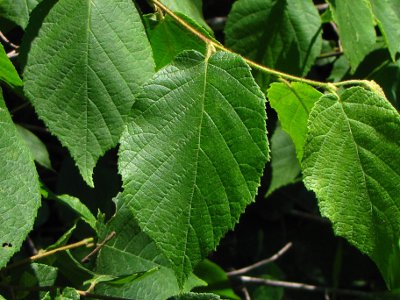American Hazelnut Tree
Category: Deciduous Trees

Facts about American Hazelnut Tree, "Scientific name for American Hazelnut is Corylus americana". American Hazelnut Tree is a variety of tree that hails from eastern North America. The American Hazelnut Tree belongs to the Corylus category. It is an average to big plant that under some circumstances can take the shape of a small tree. It is habitually a multi-stemmed plant with elongated, external growing branches that form a thick, scattering or round shape. The American Hazelnut tree grows as a sturdy multi-stemmed plant, with safe-to-eat nuts that develop from September to October. It is sown by flora and fauna enthusiasts to magnetize and keep game in a region. The American Hazelnut Tree prefers complete sun for the greatest development and growth. Though it can cultivate and continue in partial shade, plant thickness and fruit fabrication are reduced to a great extent. It is an average to fast budding variety that suckers reasonably, finally producing a multi-stemmed, and bunch look.
Features of American Hazelnut Tree
The American Hazelnut tree is capable of growing to height, ranging from 8 feet to 12 feet (2.43 to 3.65 meters) and with a top spread, ranging from 10 feet to 15 feet (3.04 to 4.57 meters). The American Hazelnut Tree acclimatizes well to a variety of soil pH and kinds, but performs on well-drained loams. The leaves of the tree are dark green in color and are simple, alternate, with the length, ranging from two and a half inches to six inches (6.3 to 15.2 cm). The female flower of the tree is red in color, whereas the male flowers assume the yellowish brown color.
The American Hazelnut Tree is a fast-growing tree and produces extremely tasty nuts that are a mast of deer, squirrels, turkey, pheasants, woodpeckers and other creatures. The male catkins are a foodstuff staple of ruffed complaint all through the winter. Trees grown from the seed of the American Hazelnut tree will start to produce nuts following eight years.
Due to the small size, the American Hazelnut tree adjusts well to establishing and other non-formal regions. It bears yearly, copious crops of small, sugary flavoring nuts. The nuts of the tree are trouble-free to break and drop free of the shell when grown-up.
American Hazelnut Tree leaves are made up of many colored pigments, green chlorophyll hides the colors during the growing season of spring and summer. As days get shorter and cooler temperatures come in the fall, it cause the chlorophyll to break down and than the other color pigments can be seen.
American Hazelnut Tree growth is referred to as Meristem (The undifferentiated embryonic plant tissue from which new cells are created, as that at the tip of a root or stem). This tissue can be found at the tips of shoots and leaves. Inside the stem growth in thickness occurs at the vascular cambium.
American Hazelnut Trees make their own food from sunlight, carbon dioxide, water, and nutrients from the soil.
Uses of American Hazelnut Tree
The nuts of the American Hazelnut tree are safe to eat, even though smaller than the more generally refined filberts. The delicious nuts of the tree are highly valued by wildlife and people. Filbert hedges of the tree can be employed as visual screens, windbreaks, and to magnetize wildlife.
You can tell a American Hazelnut Trees age by the number of growth rings. Growth rings size shows what kind of conditions accrued that year, the temperature and if it was a dry or wet year.
Bark of the American Hazelnut Tree protects it from the elements and is made up of dead cells.
American Hazelnut Tree roots usually grow two to three times the width of the tree branches. The ideal time to fertilize your American Hazelnut Tree is in late fall or early spring. If you want to transplant a American Hazelnut Tree do it in fall, this is ideal for most trees.
The average lifespan of the American Hazelnut tree ranges from 15 years to 20 years.

 Back To Category Deciduous Trees
Back To Category Deciduous Trees